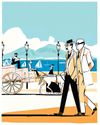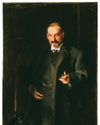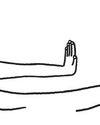
As a young man in the nineteen-eighties, Tucker Swanson McNear Carlson set out to claim his stake in the establishment. His access to money and influence started at home. His stepmother, Patricia, was an heir to the Swanson frozen-food fortune. His father, Dick, was a California TV anchor who became a Washington fixture after a stint in the Reagan Administration. For fortunate clans like the Carlsons, it was “A Wonderful Time,” to borrow the title of a volume of contemporaneous portraits of “the life of America’s elite,” which included “the Cabots sailing off Boston’s North Shore, and Barry Goldwater on the range in Arizona.”
As a teen-ager, Carlson attended St. George’s School, beside the ocean in Rhode Island, one of sixteen American prep schools that the sociologist E. Digby Baltzell described as “differentiating the upper classes from the rest of the population.” Carlson dated (and later married) the headmaster’s daughter. His college applications were rejected, but the headmaster exerted influence at his own alma mater, Trinity College, and Carlson was admitted. He did not excel there; he went on to earn what he described as a “string of Ds.” After college, he applied to the C.I.A., and when he was rejected there, too, his father offered some rueful advice: “You should consider journalism. They’ll take anybody.” Soon, Carlson was writing for the Policy Review, a periodical published by the Heritage Foundation, followed by The Weekly Standard, Esquire, and New York, while also becoming the youngest anchor on CNN.
This story is from the {{IssueName}} edition of {{MagazineName}}.
Start your 7-day Magzter GOLD free trial to access thousands of curated premium stories, and 9,000+ magazines and newspapers.
Already a subscriber ? Sign In
This story is from the {{IssueName}} edition of {{MagazineName}}.
Start your 7-day Magzter GOLD free trial to access thousands of curated premium stories, and 9,000+ magazines and newspapers.
Already a subscriber? Sign In

BADDIE ISSUES
\"Wicked\" and \"Gladiator II.\"

LET'S MAKE A DEAL
\"Death Becomes Her\" and \"Burnout Paradise.\"

ANTI HEROES
\"The Franchise,\" on HBO.

FELLOW-TRAVELLERS
The surprisingly sunny origins of the Frankfurt School.

NOW YOU SEE ME
John Singer Sargent's strange, slippery portraits of an art dealer's family.

PARIS FRIEND - SHUANG XUETAO
Xiaoguo had a terror of thirst, so he kept a glass of water on the table beside his hospital bed. As soon as it was empty, he asked me to refill it. I wanted to warn him that this was unhealthy - guzzling water all night long puts pressure on the kidneys, and pissing that much couldn't be good for his injury. He was tall, though, so I decided his insides could probably cope.

WILD SIDE
Is Lake Tahoe's bear boom getting out of hand?

GETTING A GRIP
Robots learn to use their hands.

WITHHOLDING SEX FROM MY WIFE
In the wake of [the] election, progressive women, who are outraged over Donald Trump's victory at the ballot box, have taken to social media with public, vengeful vows of chastity. - The Free Press.

DEADLINE EXTENSION
Old age, reborn.